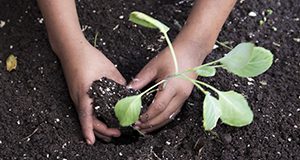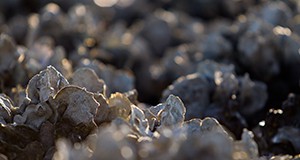Home vegetable gardening has numerous documented benefits, including savings on the family food bill. How can a gardener calculate cost savings from a garden? Which vegetables cost more to grow in the garden and which cost less? This 10-page fact sheet written by Kevin Athearn, Hannah Wooten, Liz Felter, Catherine G. Campbell, Jessica M. Ryals, Matthew C. Lollar, Juanita Popenoe, Lorna Bravo, LuAnn Duncan, Christa Court, and Wendy Wilber and published by the UF/IFAS Food and Resource Economics Department helps home gardeners estimate the costs and cost savings from vegetable gardening.
https://edis.ifas.ufl.edu/fe1092
Tag: Christa Court
Potential Economic Benefits of Restoring Commercial Oyster Harvest Levels in Apalachicola Bay, Florida
Florida’s Apalachicola Bay has long been known for its oyster harvesting and processing industry, but a steady decline in oyster landings in the Bay has threatened the industry. The complex nature of the human and natural systems that together affect Apalachicola’s oyster reefs has created uncertainty about the long-term sustainability of the oyster fishing industry in Franklin County, which has prompted many questions about the ecology of the Bay and the economy of the region from a variety of stakeholders that directly or indirectly depend on the survival and successful restoration of the Apalachicola Bay oyster fishery. This 5-page fact sheet estimates the potential economic impacts associated with a successfully restored oyster reef in Apalachicola Bay, basing estimates on different hypothetical oyster harvest goals. Written by Robert Botta, Ed Camp, Christa Court, Caleb Stair, and Charles Adams and published by the UF/IFAS Food and Resource Economics Department, it is designed to inform decision making and discussions related to restoration and resource management in the region.
https://edis.ifas.ufl.edu/fe1085
Harmonizing the Assessment of the Impacts of Natural Disasters to Florida Agriculture
UF/IFAS Extension has developed an online survey instrument to improve collection of data on losses to Florida agricultural businesses following disasters and to assist agricultural stakeholders in times of disaster. Florida’s agricultural sector frequently experiences substantial adverse impacts during and after natural disasters. Depending on the size and scope of the disaster, agricultural business owners and employees could suffer reduced earnings, financial insecurity, and social stress, and consumers could experience temporary food insecurity. Timely provision of credible estimates of agricultural losses after a disaster is critical to an official disaster declaration and to timely provision of disaster relief and recovery, but collecting data on agricultural losses can present challenges. This 15-page fact sheet written by Christa Court, Alan Hodges, and Matt Lollar and published by the UF/IFAS Food and Resource Economics Department describes the online survey instrument, explains how to use it, and communicates how the data collected will be used in analyses of economic losses.
https://edis.ifas.ufl.edu/fe1075


